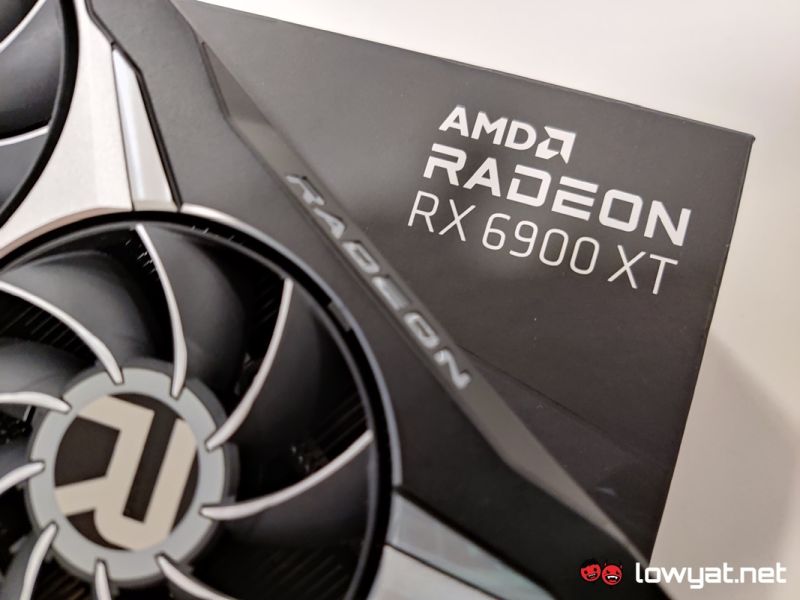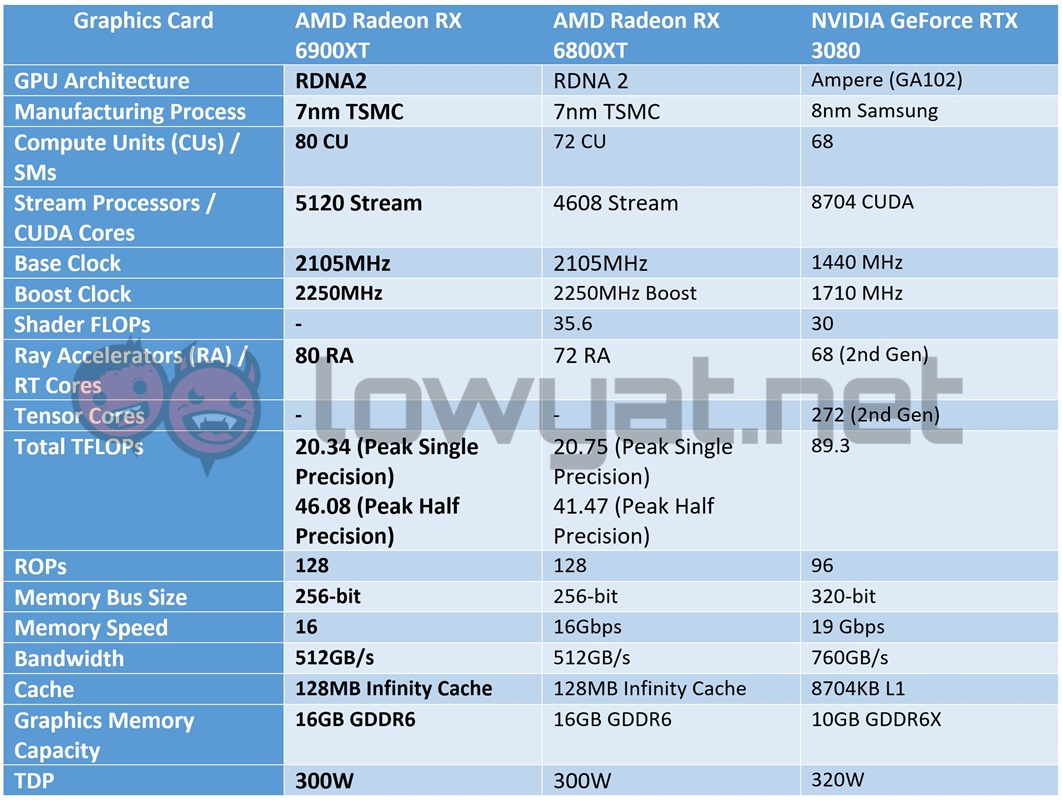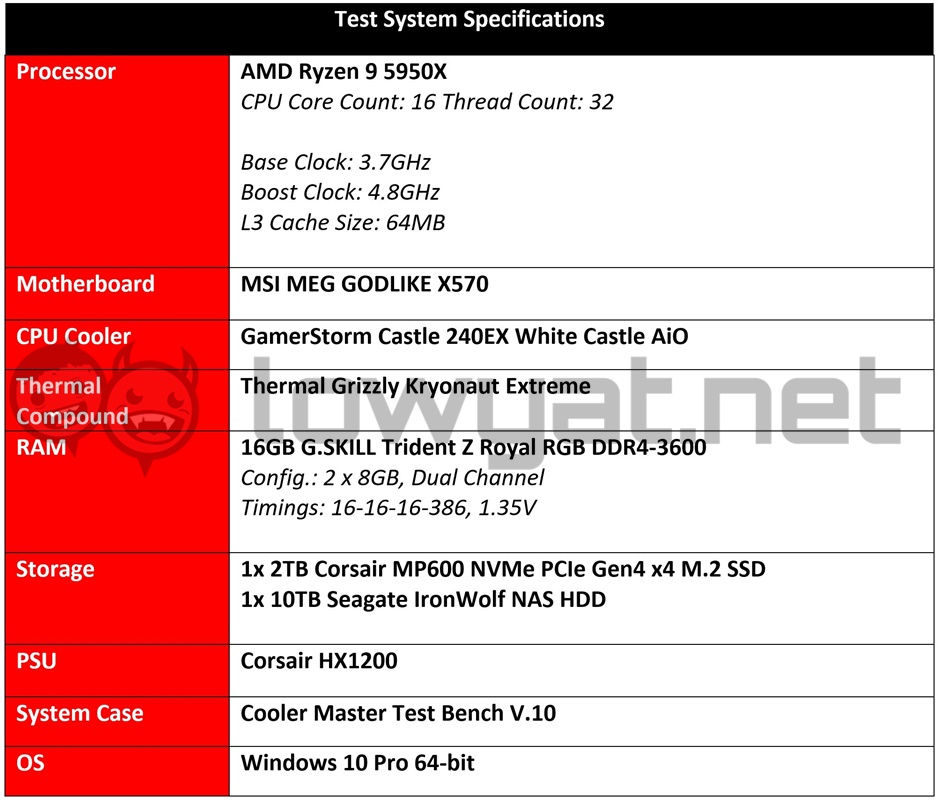It’s been nearly a month since the launch of AMD’s Radeon RX 6800 series cards and the launch of our review of the 6800XT. Today, and as promised by AMD, we’re now able to give some insight into its card on the pedestal, the Radeon RX 6900XT.
Armed with more Compute Cores, the card virtually shares similar hardware specifications with the 6800XT. Of course, the evergreen question still remains: how much of a boost, exactly, do the extra Compute Cores and Stream Processors give?
Specifications
In a side-by-side comparison, there are a couple of points that set the 6900XT apart from the 6800XT, the important points being the number of Compute Units (CUs), Stream Processors, and Ray Accelerators (RA) are higher for the former.
Beyond that, both cards are based on the same 7nm manufacturing process by TSMC and RDNA 2 GPU architecture. They also have the same base and boost clock speeds, as well as the same memory bandwidth, and 128MB Infinity Cache. Oh, and the same 16GB of GDDR6 graphics memory.
Design
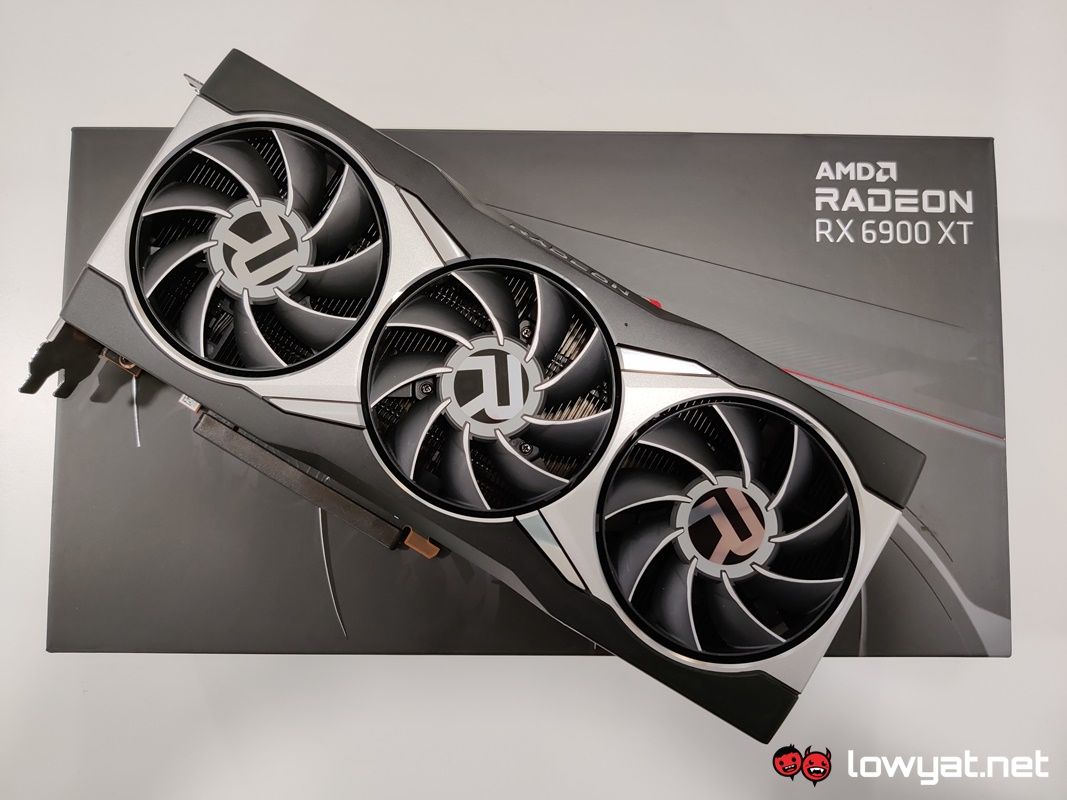 I won’t spend too much time talking about the design and shape of the card, for the simple fact that I have already spoken at length about AMD’s relatively chunky and weighty reference cooler.
I won’t spend too much time talking about the design and shape of the card, for the simple fact that I have already spoken at length about AMD’s relatively chunky and weighty reference cooler.
Like its lesser counterparts, the 6900XT is wrapped in the same black and silver triple-fan, made to cool down the massive aluminium heatsink block that sits on top of the GPU core and its surrounding VRAM modules. On top of that, there’s still no ventilation at the back of the card, meaning that the only way out for all the hot air being generated by the card is via its spine and belly. The latter still being sore point for me, because it means that the card is effectively inducing unnecessary heat for the motherboard.
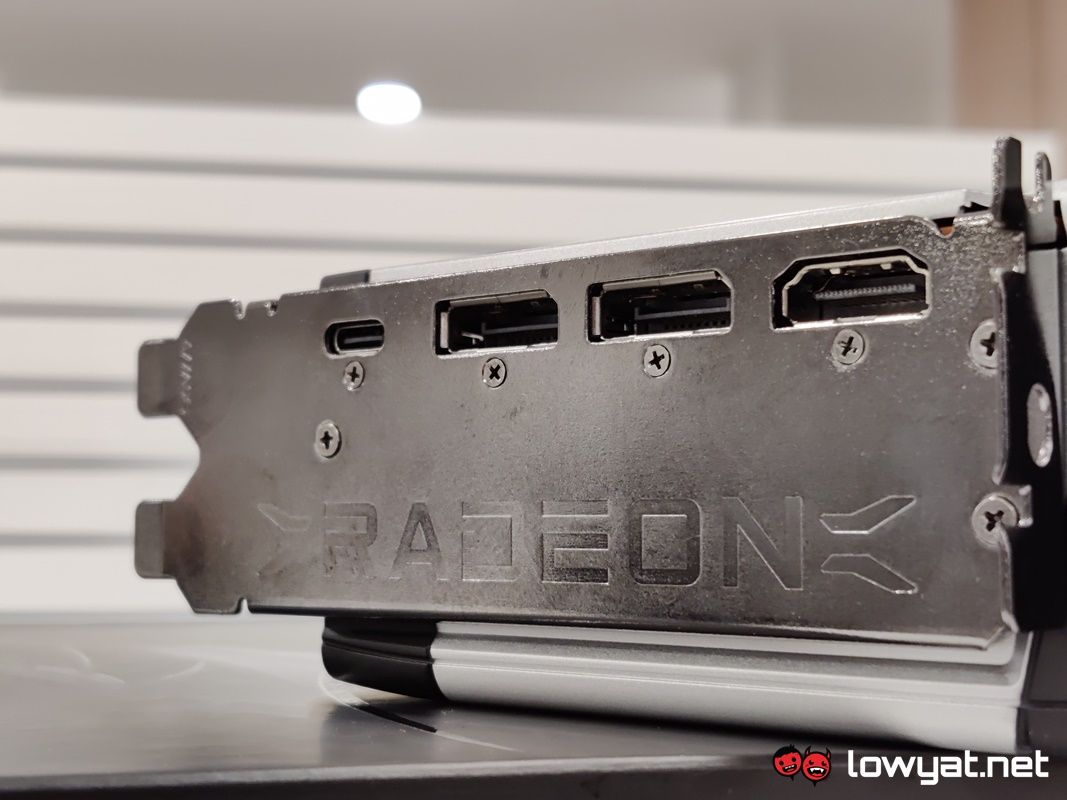
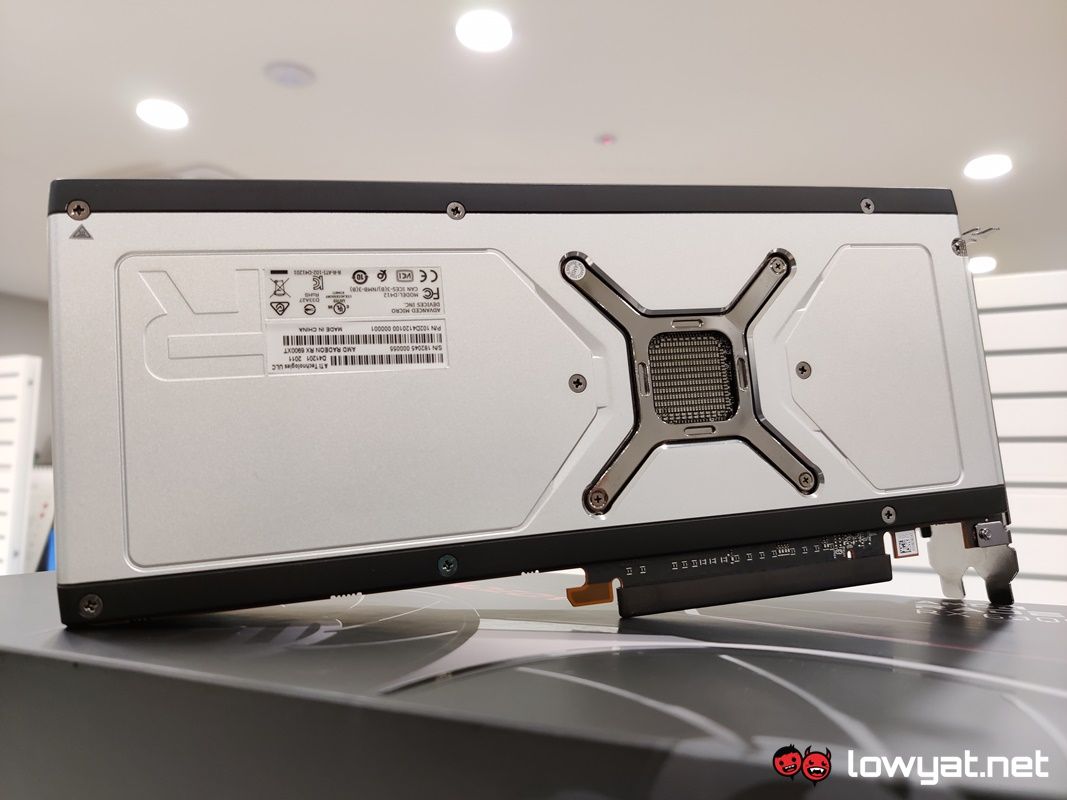
The reference cooler design is also AMD’s own worst enemy. I still have the 6800XT in my lab and because both cards looks identical, telling both of them apart is like playing the lottery, especially when they’re placed side-by-side. In fact, the only distinguishable points between the two are the product labels that stuck on its backplate.
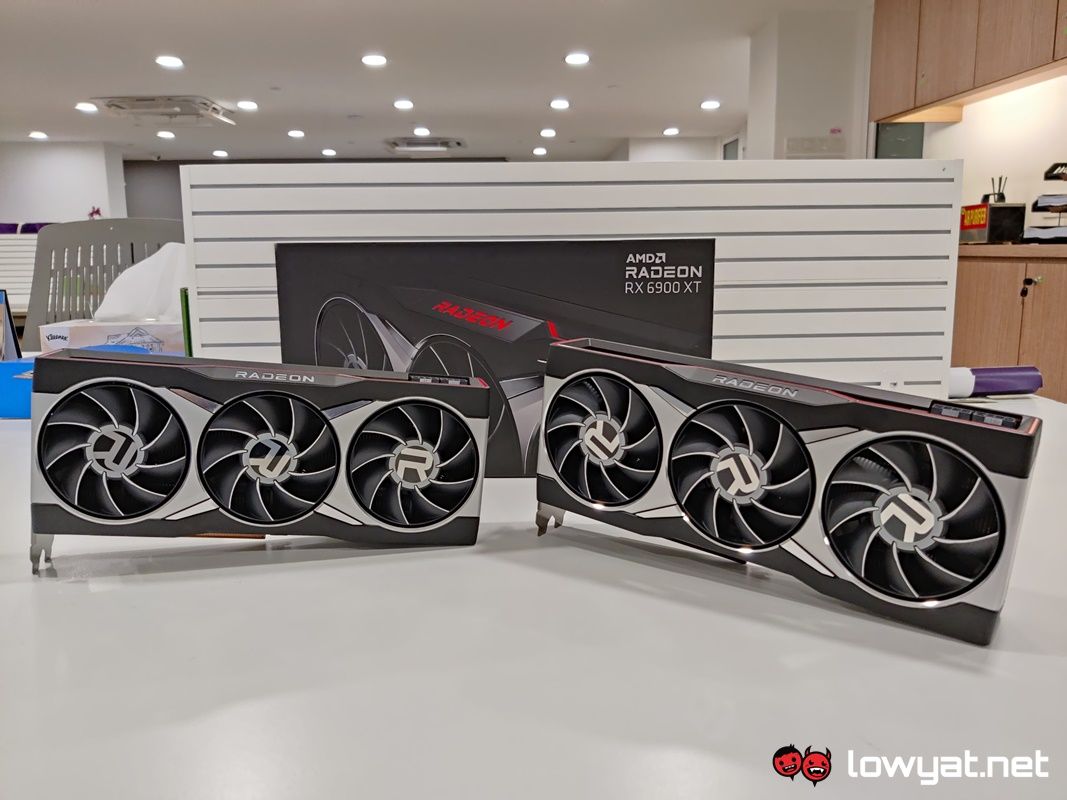
Seriously, I could post pictures of the 6800XT in this article right now and you wouldn’t be the wiser.
Testbed
The testbed I am using remains the same from when I tested the 6800XT. This includes the Ryzen 9 5950X, along with the same X570 motherboard and 16GB DDR4-3600MHz RAM. As for the display panel, the monitor I am using in this test is the ASUS ROG Swift PG27UQ 4K HDR gaming monitor.
The standard synthetic benchmarks of UL’s 3DMark and Unigine Superposition, along with the usual titles for real-world testing, with the exception of one game: Shadow of the Tomb Raider. During the review period, the game consistently fails to open up the benchmark screen, which is regrettable.
For comparison, I will be benching the 6900XT against its direct competitor, NVIDIA’s GeForce RTX 3090. Oh, and I am also testing the card directly out of the box and not overclocked.
Benchmarks
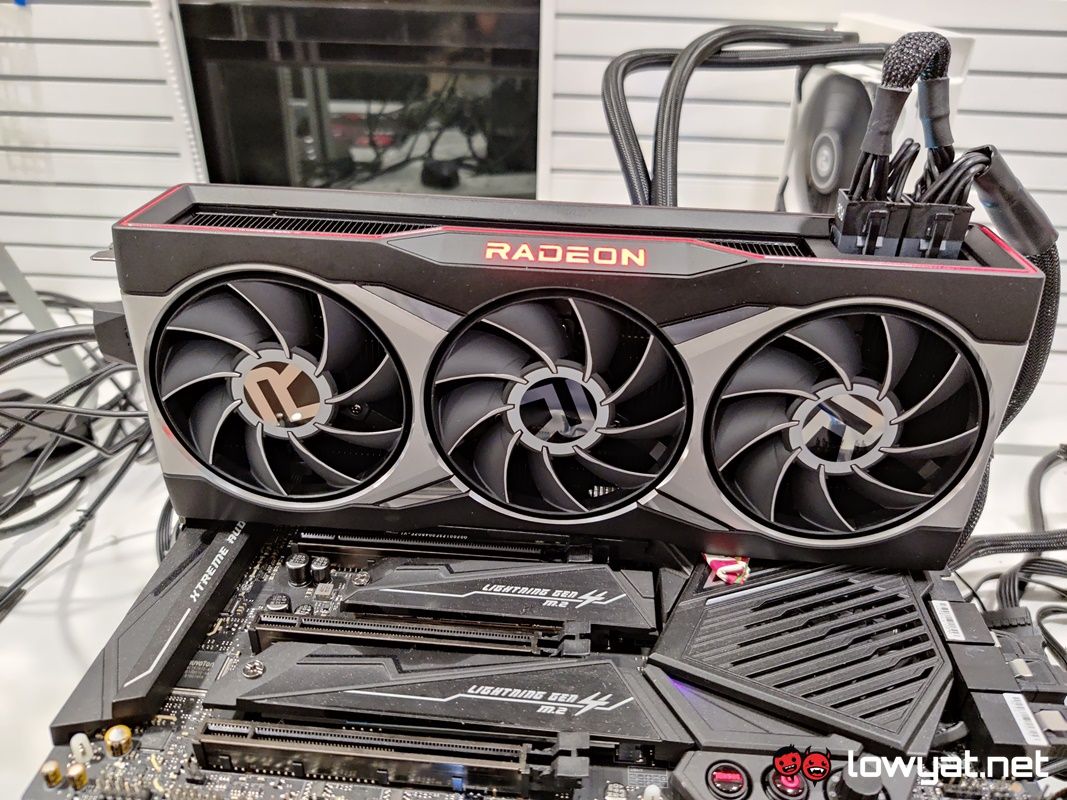
The performance of the 6900XT is a little surprising. Like the 6800XT, the 6900XT pulls ahead of the RTX 3090 in the synthetic benchmark portion of the review and really widens the gaps. I am seeing a difference of nearly 10000 points between the two cards on the Fire Strike test, around 3000 points on Fire Strike Extreme, and 1000 points on the Fire Strike Ultra test. Of course, where card does visibly lose out is on the Port Royal test.
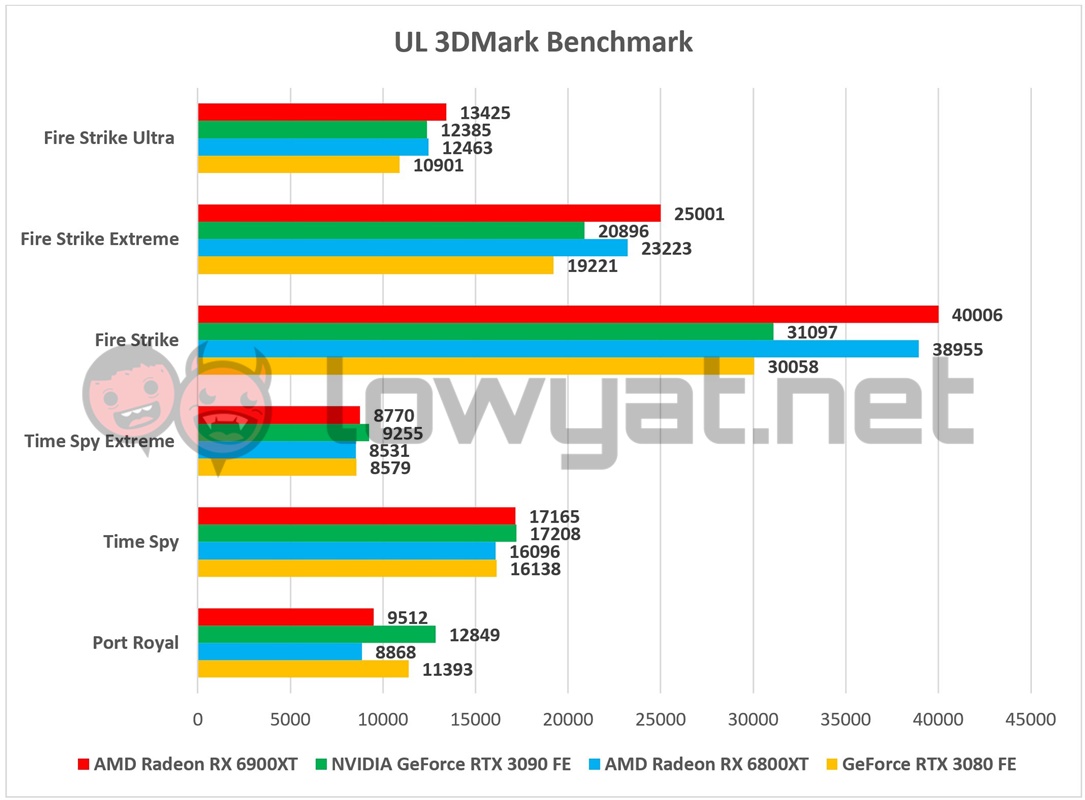
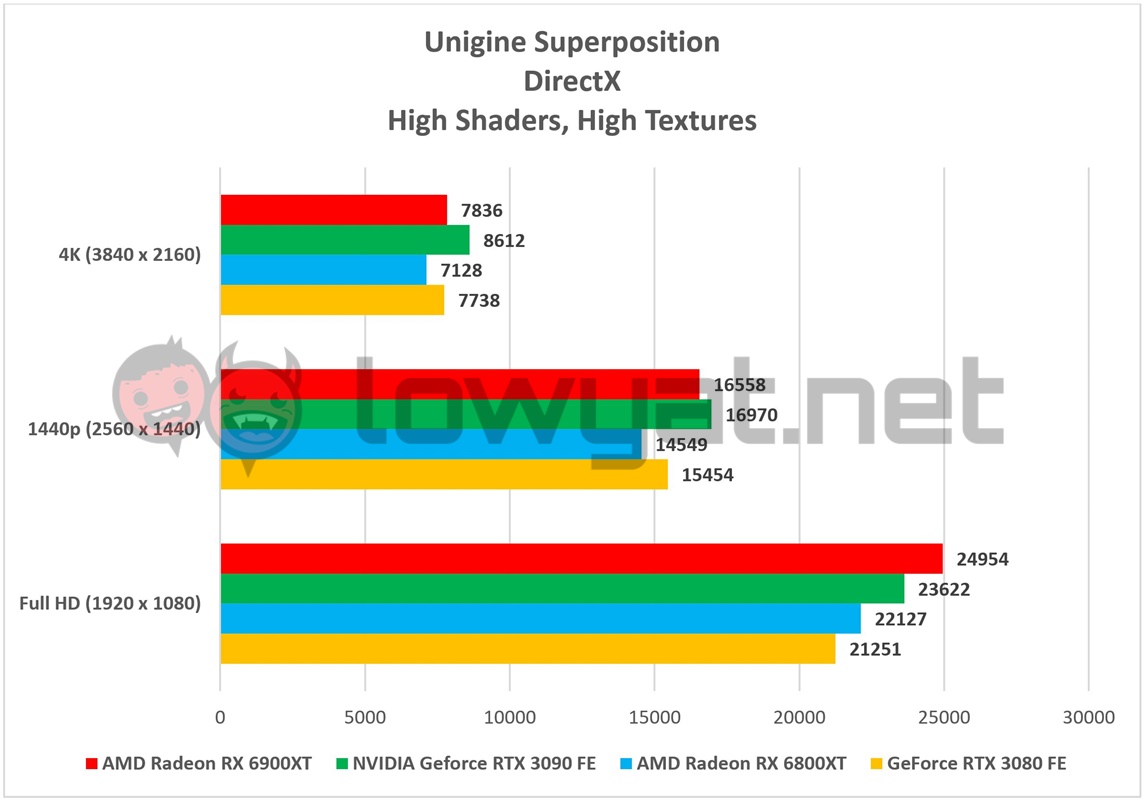
On Unigine’s Superposition, the 6900XT actually lags behind the RTX 3090 at 4K and 1440p resolutions, but still keeps a slight lead in Full HD. That said, its performance isn’t that much better than the 6800XT, a point that practically insists on itself throughout the review.
Moving on to the gaming aspect, the 6900XT’s performance, as I hinted, currently sits in the hit-or-miss territory. When used as is and outside the realm of ray-tracing, the card is an absolute beast and sizes up the RTX 3090 in almost every title.
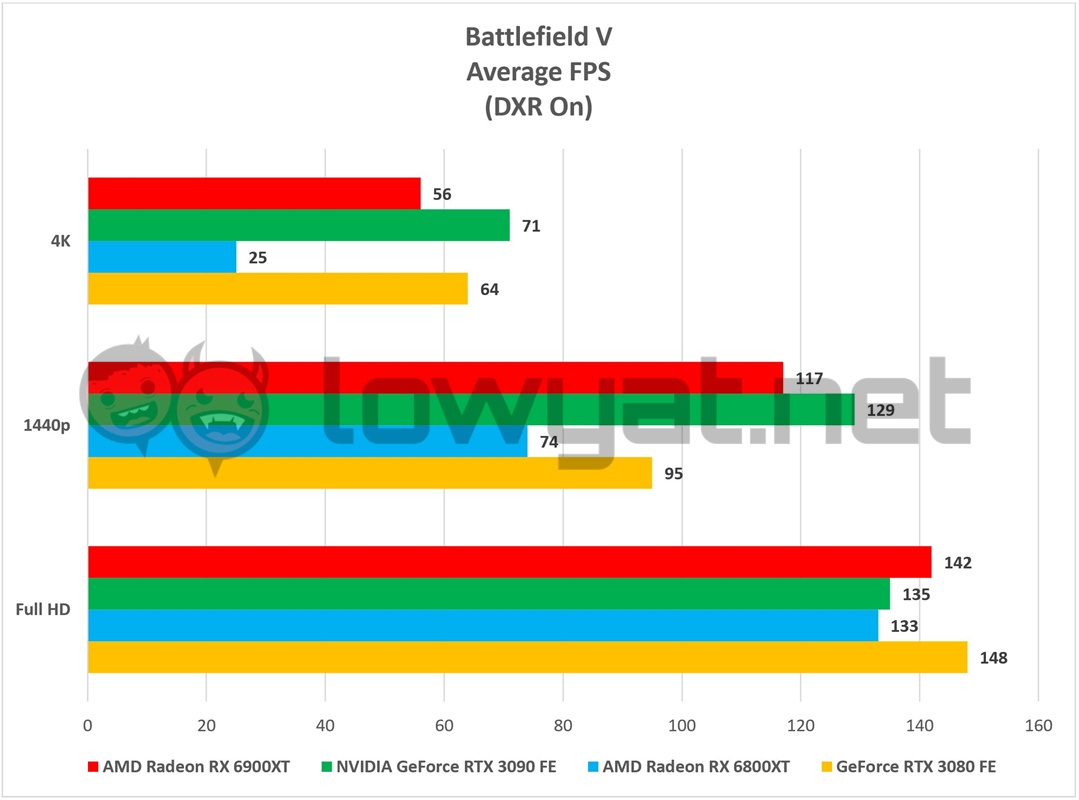
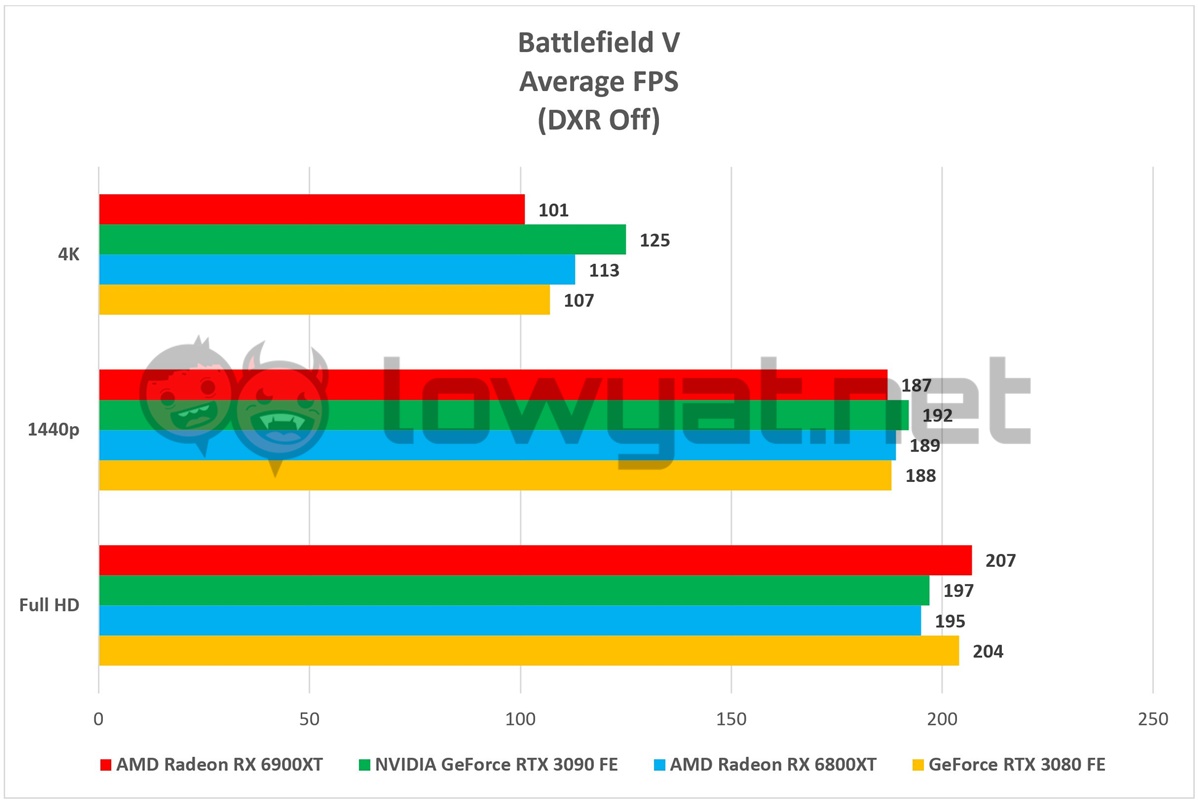
Unsurprisingly, titles with the ray-tracing options such as Battlefield V (BFV) and Control are not the card’s strong suit and with the latter title, the card is practically wheezing with the DXR presets cranked. And at 4K resolution, to boot. But, as I mentioned in my 6800XT review, dialing down the resolution to 1440p while keeping the DXR presets makes the game playable. For that matter, this is going to be the current resolution for the 6900XT if you intend on playing DXR-capable titles, at least until AMD’s SuperResolution upscaler hits the market next year.
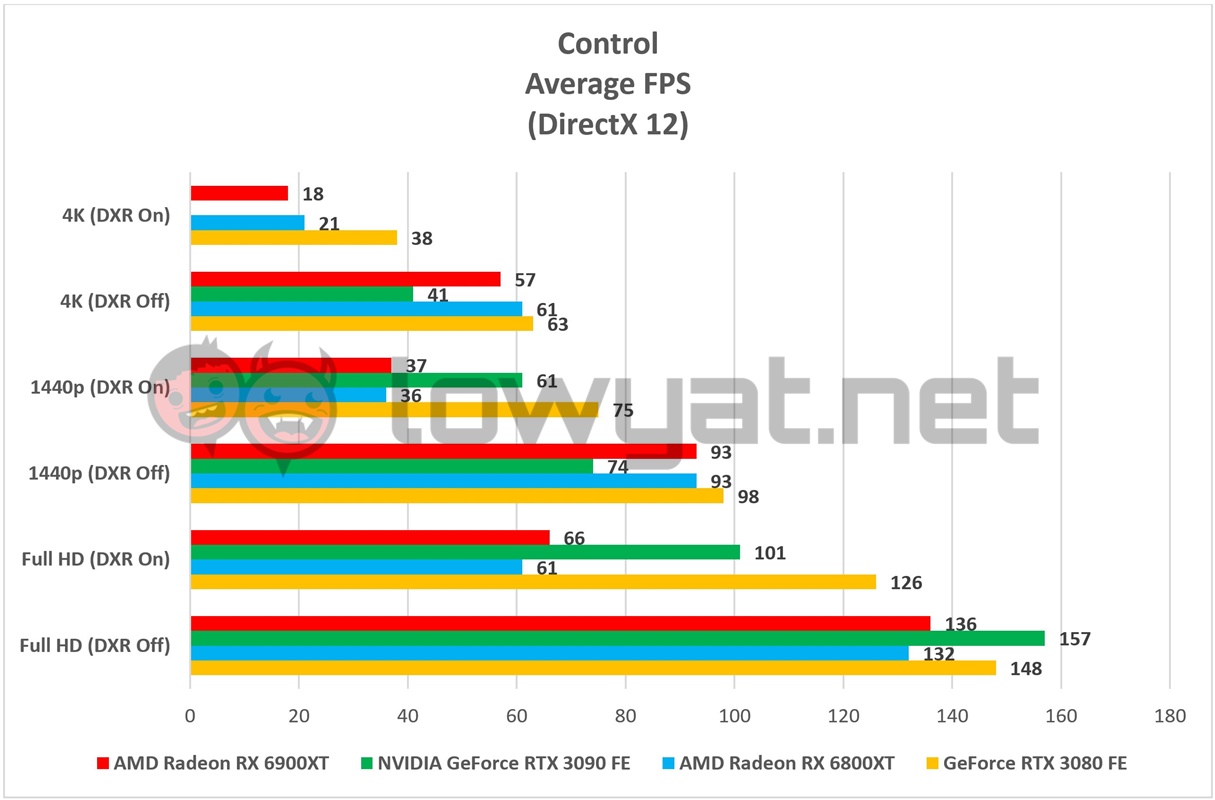
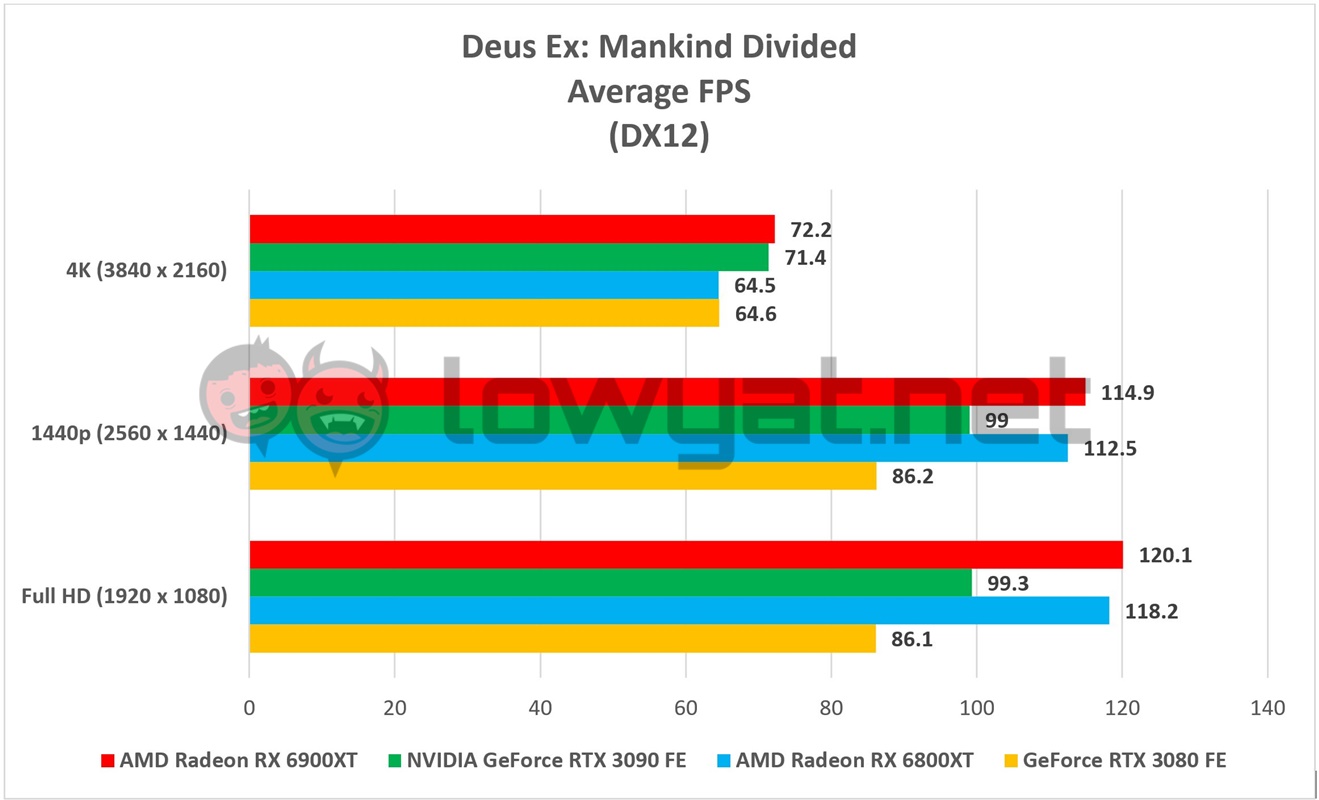
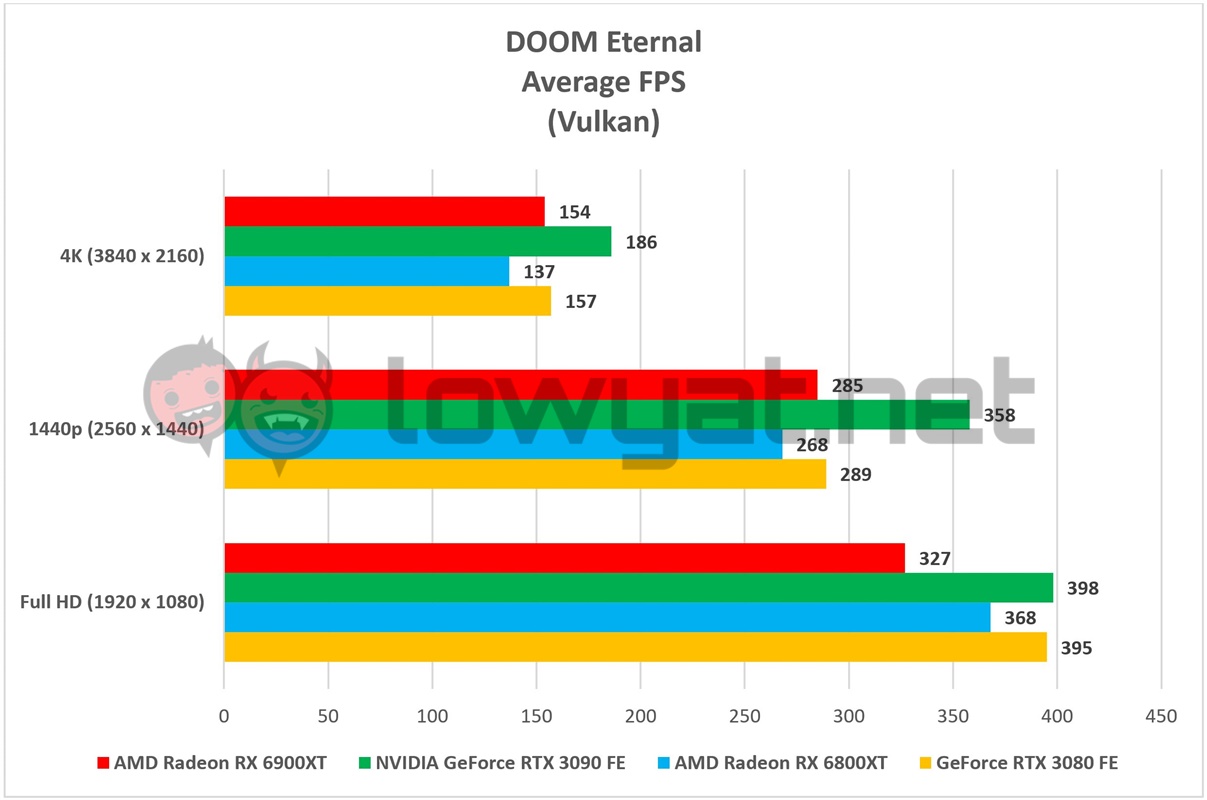
On a side note, there is an issue that I believe to be of particular importance and should be mentioned about the 6900XT. It honestly wasn’t easy to test, as it was the first graphics card in a long time to really try my patience. During testing, the card would occasionally do this “snap” at me, which then caused my screen to go blank.
A workaround (sort of) to this issue actually involves me switching the PCIe ports on the PSU. That said, I find the solution to be rather odd, especially since my 1200W PSU is barely two years old. In any case, the 6900XT did not present any further issues after this, but you have been warned.
Temperature and Power Consumption
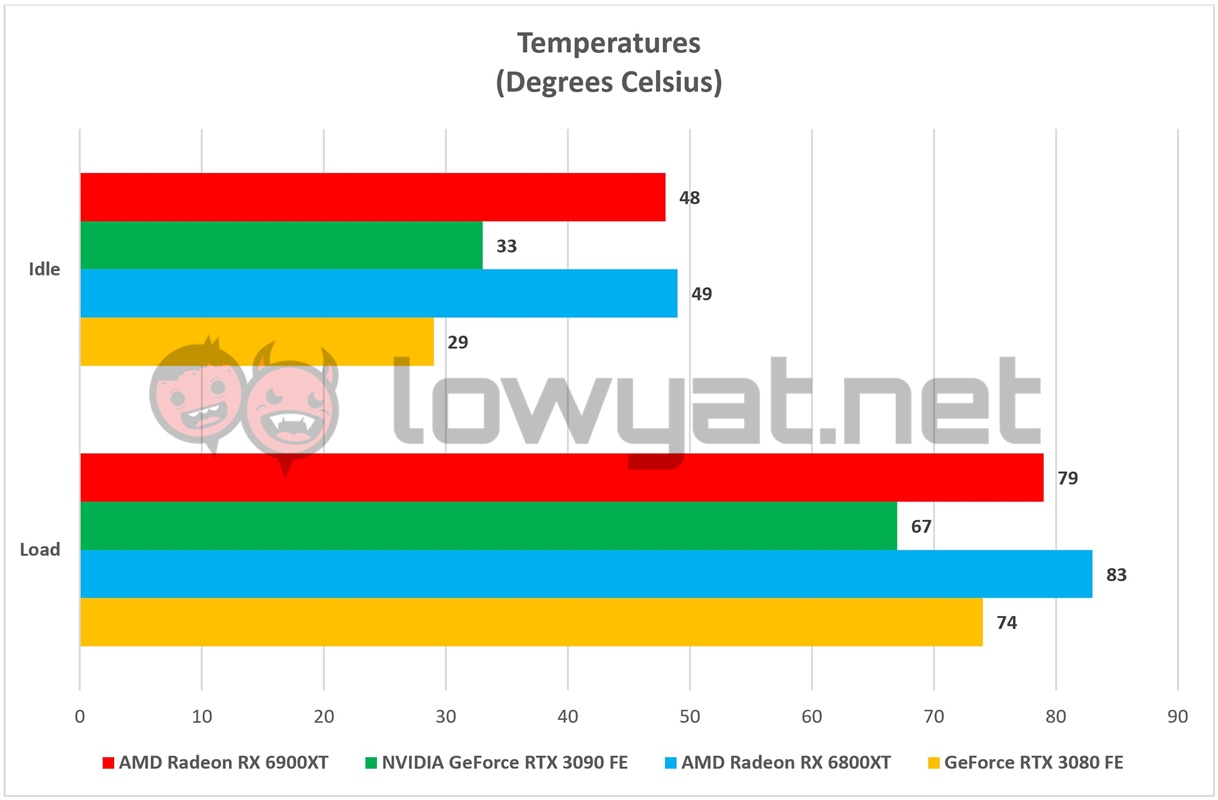
As for the temperature of the 6900XT, the card’s idle temperature seems to be, yet again, nearly the same as the 6800XT at 48°C, but surprisingly, its peak temperature never really went above the 79°C mark. Mind you, this is despite the card being tested with DXR turned on and off on select titles.
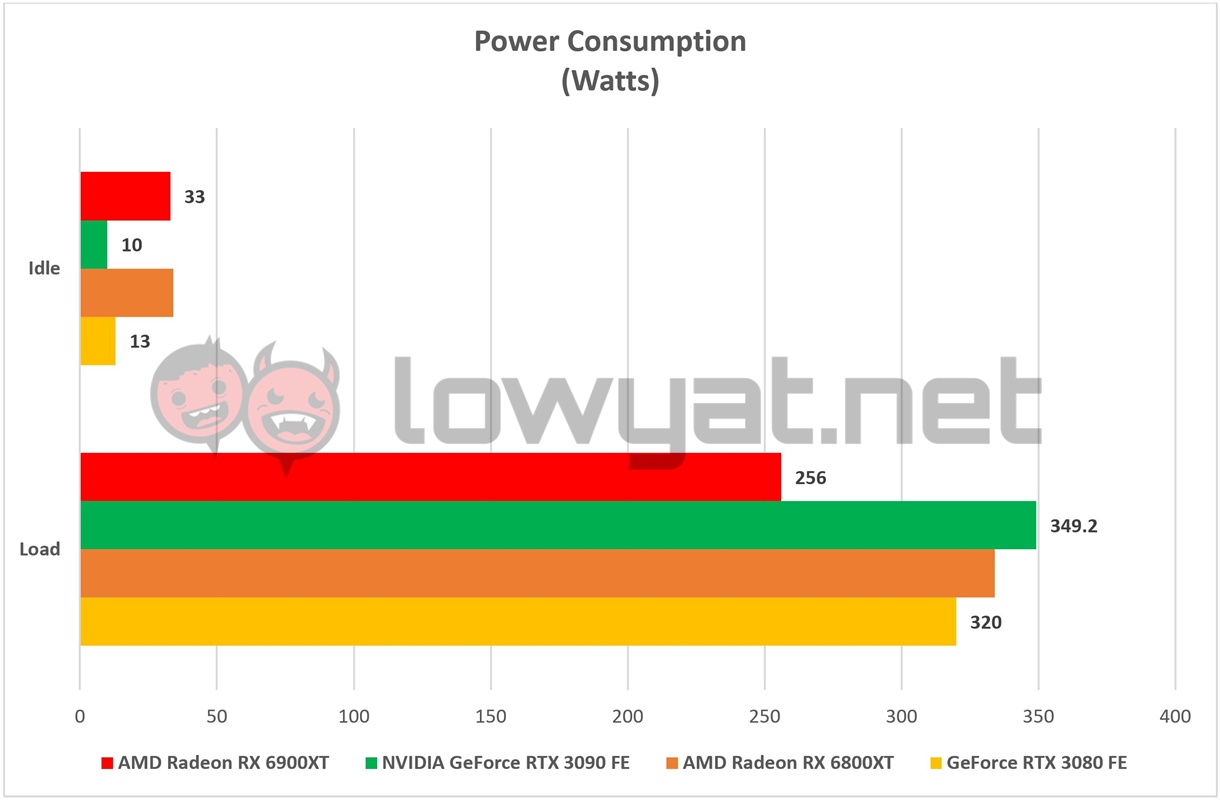
Its power consumption is quite surprising too. UNlike the 6800XT which drew more than 300W, the 6900XT never seemed to pull more than 256W off the wall, making it slightly more power efficient than its sibling.
Conclusion
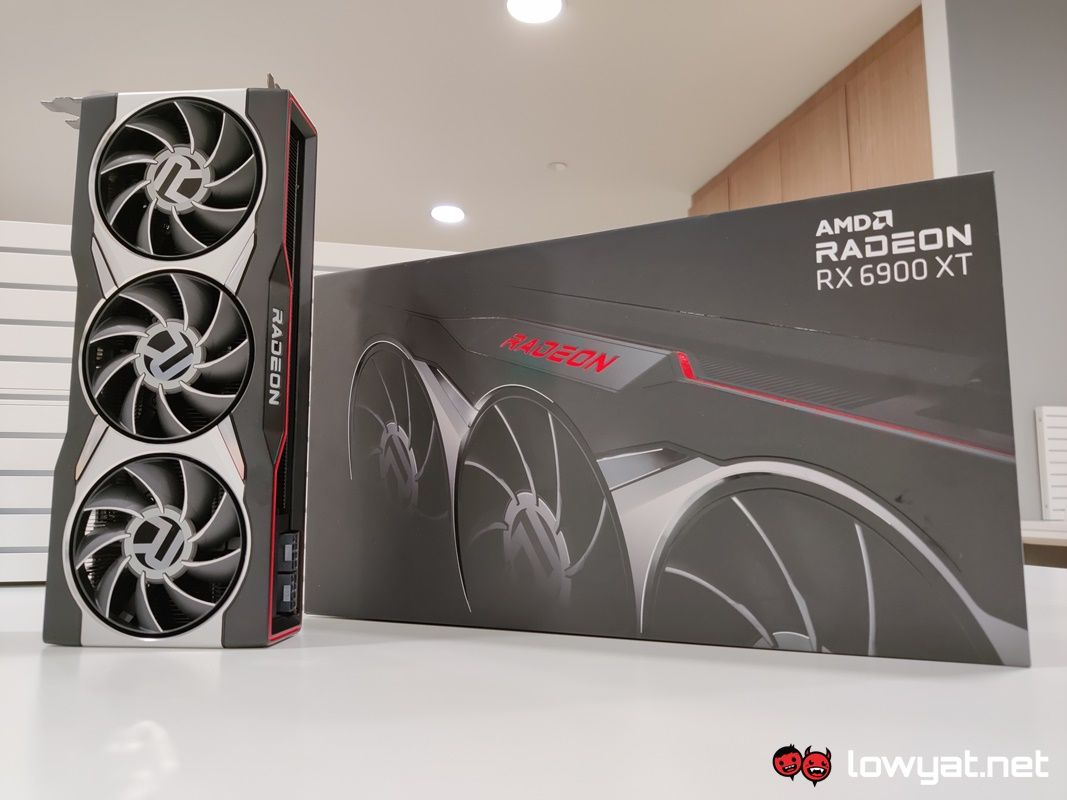
As an exercise in future-proofing one’s PC for 4K gaming with ray-tracing, the AMD Radeon 6900XT is definitely a top-tier card worthy of consideration as an alternative its NVIDIA counterpart. At US$999 (~RM4067), it is also significantly cheaper than the RTX 3090.
The only drawback the 6900XT currently faces is, yet again, the current lack of a resolution upscaler tool like NVIDIA’s DLSS technology. To help take the load off the card in DXR-capable titles. Additionally, there is the weird tripping issue that I encountered during testing and if I’m honest, I sincerely hope the issue doesn’t actually carry forward on to AMD’s AIB partner cards.
Beyond that, there is little holding me back from recommending this card.
The post AMD Radeon RX 6900XT Review: Powerful, Yet Ever So Slightly Flawed appeared first on Lowyat.NET.



